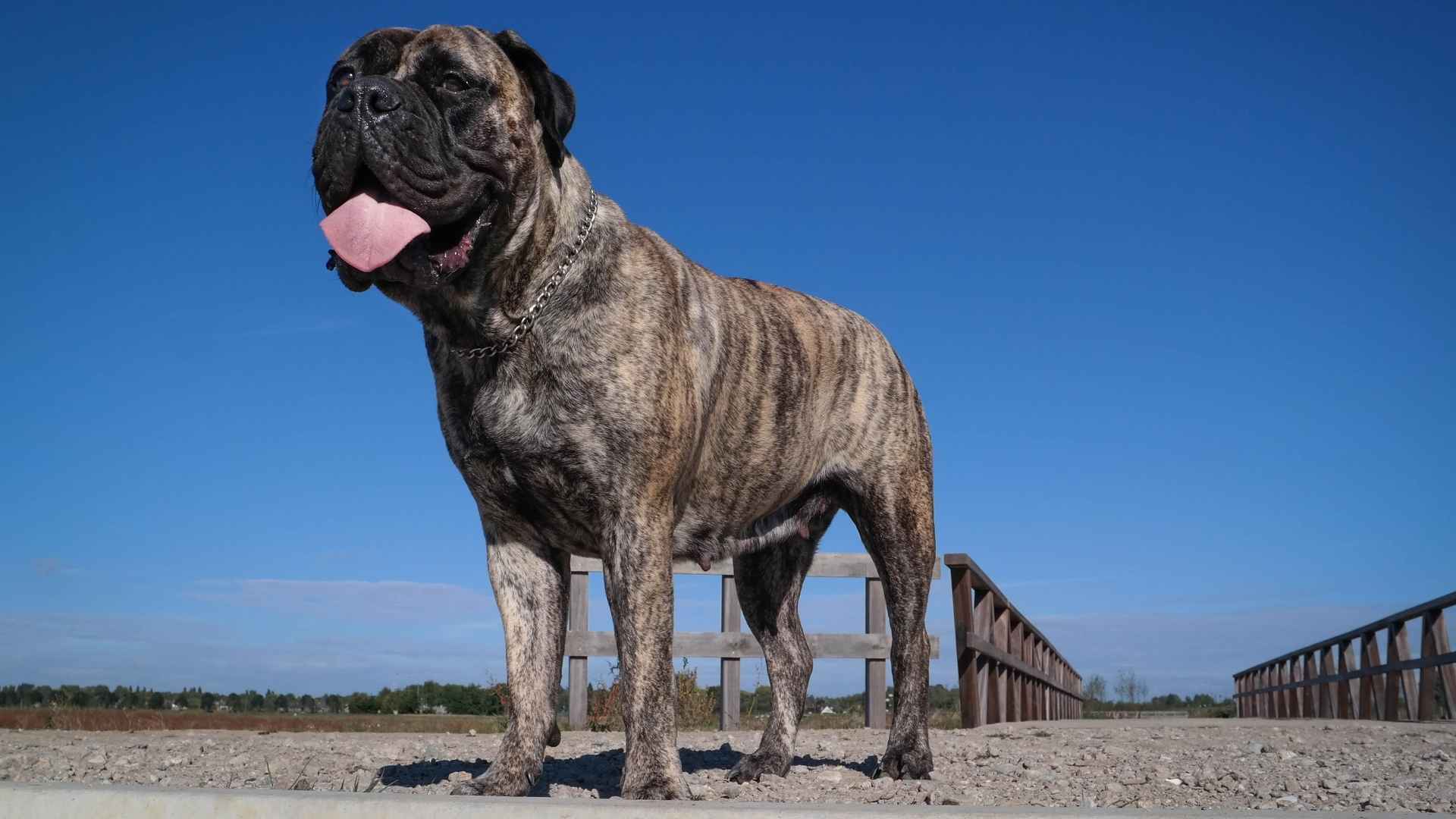Massive heads. Droopy Jowls. Souls as soft as butter. Mastiff dogs are gentle giants with hearts bigger than their size.
While they look like ancient warriors, these dogs are famously loyal and deeply affectionate. Families who own mastiffs often say, “He’s not just a dog—he’s our protector.” And it’s true.
Whether it’s guarding the home or cuddling with kids, mastiffs carry a rare mix of courage and calm. Their presence speaks louder than barking.
In this article, we’re diving into the world of mastiffs—each breed, its history, its heart, and why they leave pawprints on your life forever.
Mastiff Dog Breeds
1. Boerboel
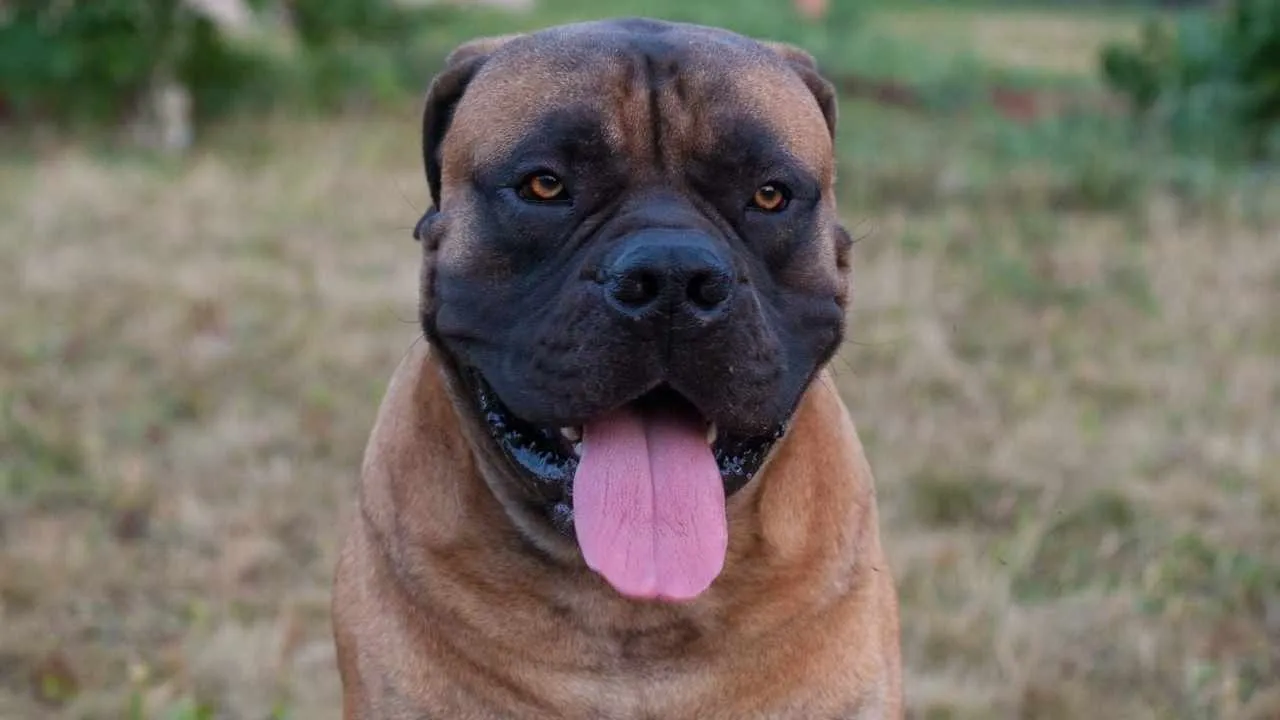
Originally bred in South Africa, the Boerboel is a powerful, confident dog with deep protective instincts. They’re not just muscle — they’re thoughtful, highly intelligent, and impressively aware of their surroundings. When trained well, they respond calmly under pressure and don’t react on impulse.
A serious protector by nature
Among the most dependable guard dogs, Boerboels are naturally territorial. They don’t bark without a reason, but when they do, it’s worth paying attention.
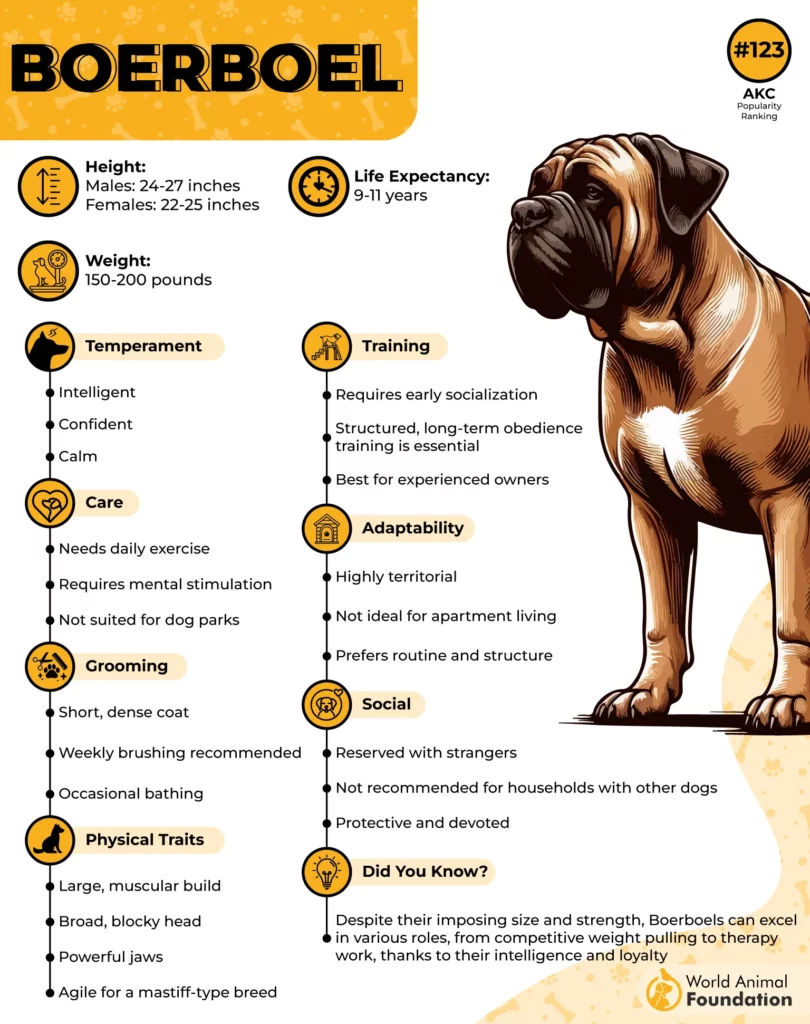
What sets them apart from other protective breeds is their balance — they can sense genuine threats and won’t overreact to a visitor or noise without reason.
Family-focused, not just fierce
Despite their size, Boerboels can be surprisingly gentle and affectionate, especially with children they grow up around. They form strong bonds and often see themselves as part of the team. That’s what makes them a unique family pet: a gentle playmate indoors and an alert protector outside.
Training isn’t optional
Boerboels require consistent leadership, clear boundaries, and early socialization. As per VCA Hospital, they’re part of the mastiff breeds group, known for their strength, and without structure, they can become stubborn. But with the right guidance, they’re not only obedient — they become incredibly loyal companions.
2. Bullmastiff
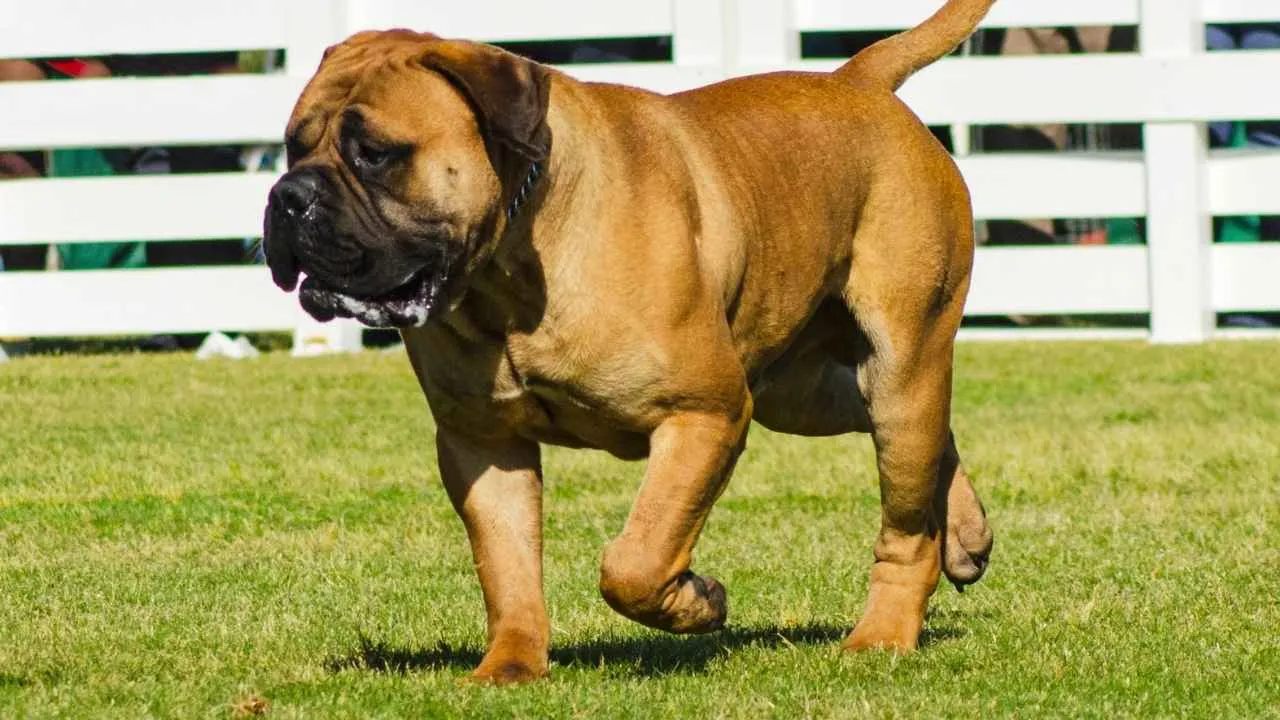
The Bullmastiff was developed in 19th-century England by crossing Bulldogs with Mastiffs — not to be aggressive, but to be silent, confident deterrents. Their original job? To catch intruders on large estates, quietly pin them down, and wait for their handler. That instinct remains today: Bullmastiffs don’t bark much, but they’re always assessing.
A guardian who reads the room
This breed doesn’t overreact. They’re patient, observant, and respond based on what’s actually happening, not noise or excitement.
They’ll step in when truly needed but are otherwise happy to stay in the background. What makes them distinct among protective breeds is that guarding isn’t about aggression — it’s about control.
Big dog, soft heart indoors
At home, Bullmastiffs tend to be calm and low-energy, as highlighted by PetMD. They’re not into constant play, but they’ll quietly follow you from room to room and settle near your feet.
They’re deeply loyal, especially to one or two family members, and form strong attachments that make them emotionally dependable.
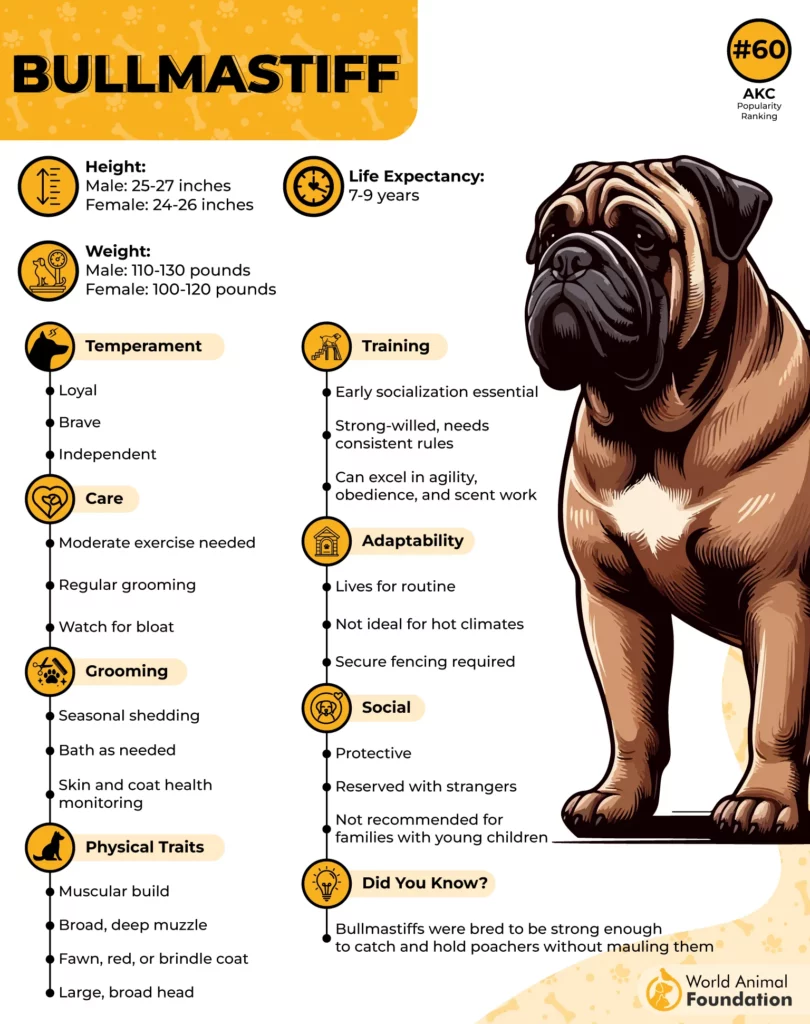
Training takes respect, not force
Bullmastiffs won’t respond to harsh commands or dominance-based training. They’re thinkers — they want to understand why they’re doing something.
Early socialization and trust-based guidance shape them into disciplined, gentle protectors who understand their role without needing constant correction.
3. Cane Corso
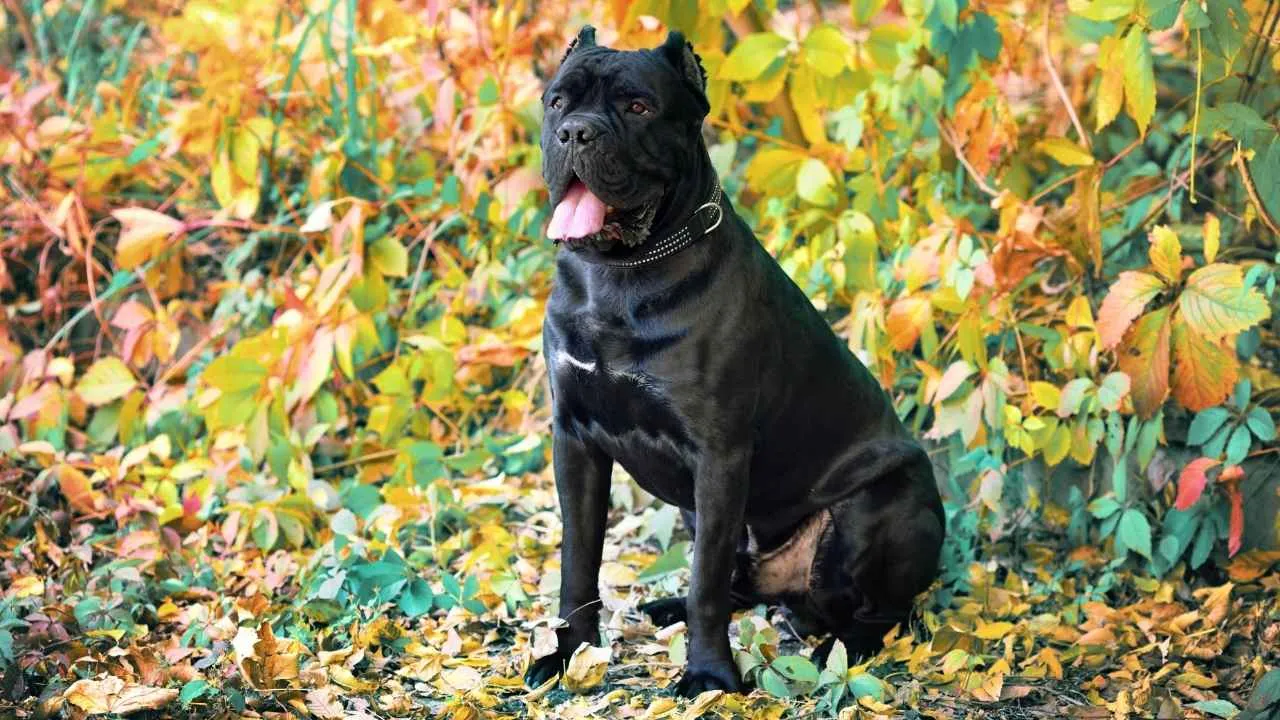
The Cane Corso isn’t your average big dog — this is a working breed that needs a job. Known for its lean, muscular build and sharp instincts, this Italian mastiff was historically used to guard property and track game. Today, their work ethic still stands out: they’re focused, quick learners who don’t enjoy lounging all day.
A protector with ancient roots
Initially bred by Roman warriors and later used to guard livestock, the Cane Corso wasn’t built to be a couch companion. They’re purpose-driven dogs that need structure and thrive in environments where they know what’s expected of them. Without that, they’ll make their own rules — and that never ends well.
Confidence, not chaos
Despite their powerful presence, Corsos aren’t impulsive. They’re calculated, steady, and surprisingly quiet indoors. Unlike some fighting dogs in history that were bred to provoke or react, the Cane Corso was refined over centuries to be a guardian, not a brawler.
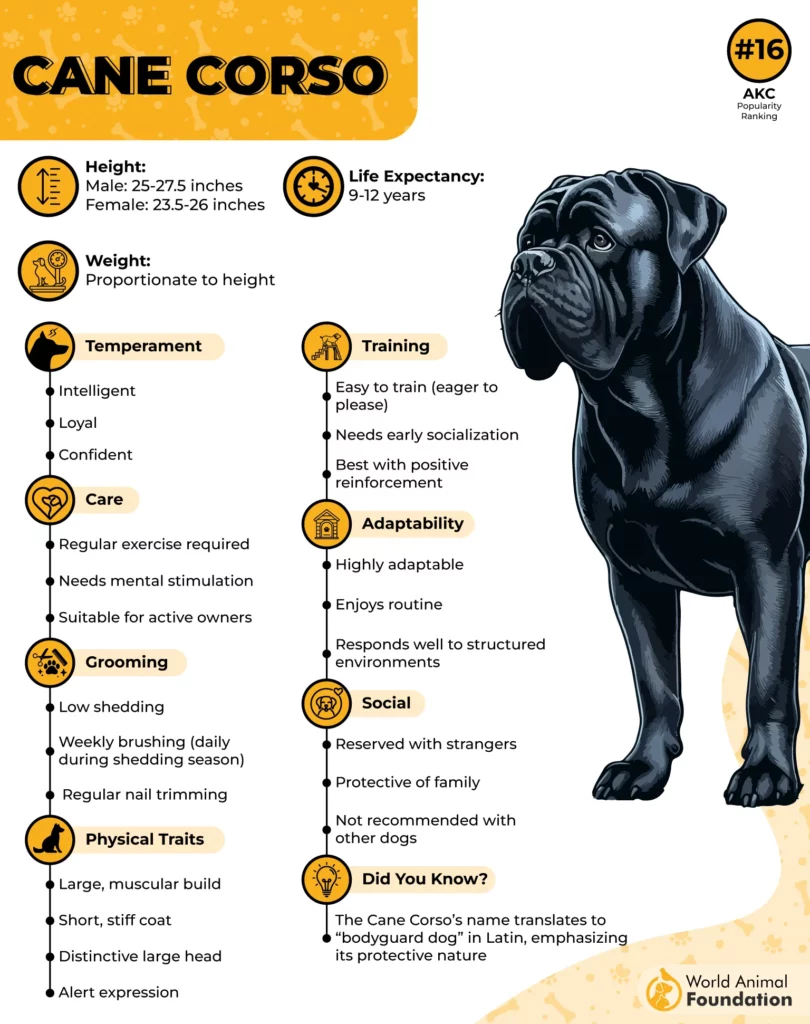
Not for everyone, and that’s okay
The Pawlicy Advisor suggested, Cane Corsos need experienced owners — people who understand boundaries, consistency, and how this breed differs from other breeds.
They don’t respond well to inconsistent routines or emotional chaos, but when guided with clarity, they’re among the most reliable protectors you’ll ever meet.
4. Dogue de Bordeaux
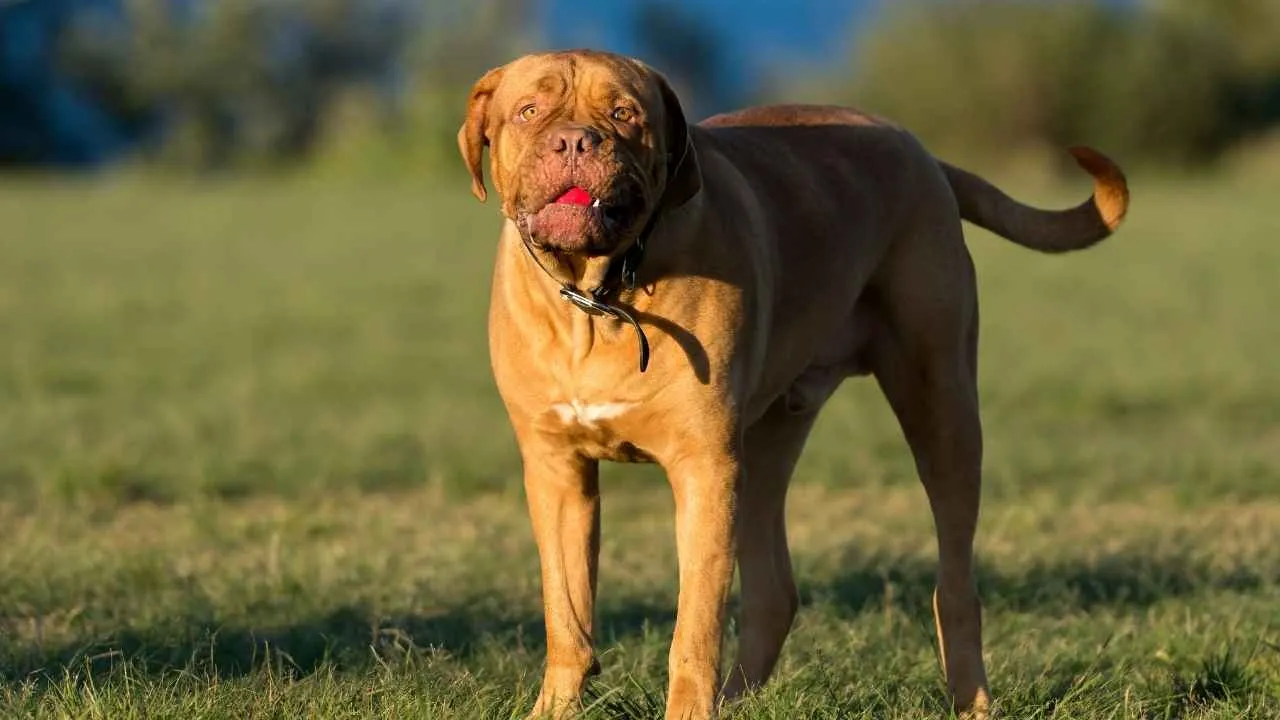
The Dogue de Bordeaux is one of the oldest French breeds, known for its massive head, loose skin, and deep chest. Despite its intimidating size, this breed is incredibly affectionate, often attaching itself to one person and forming a quiet, loyal bond. They don’t need to follow you everywhere to show they care — just being nearby is enough.
Emotionally tuned, not reactive
What sets this breed apart is its emotional depth. They’re surprisingly sensitive to tone, energy, and the atmosphere around them. If you’re stressed, they’ll pick up on it. If you’re calm, they’ll mirror that. They’re not jumpy or hyperactive, and they rarely bark without purpose — they think before they react.
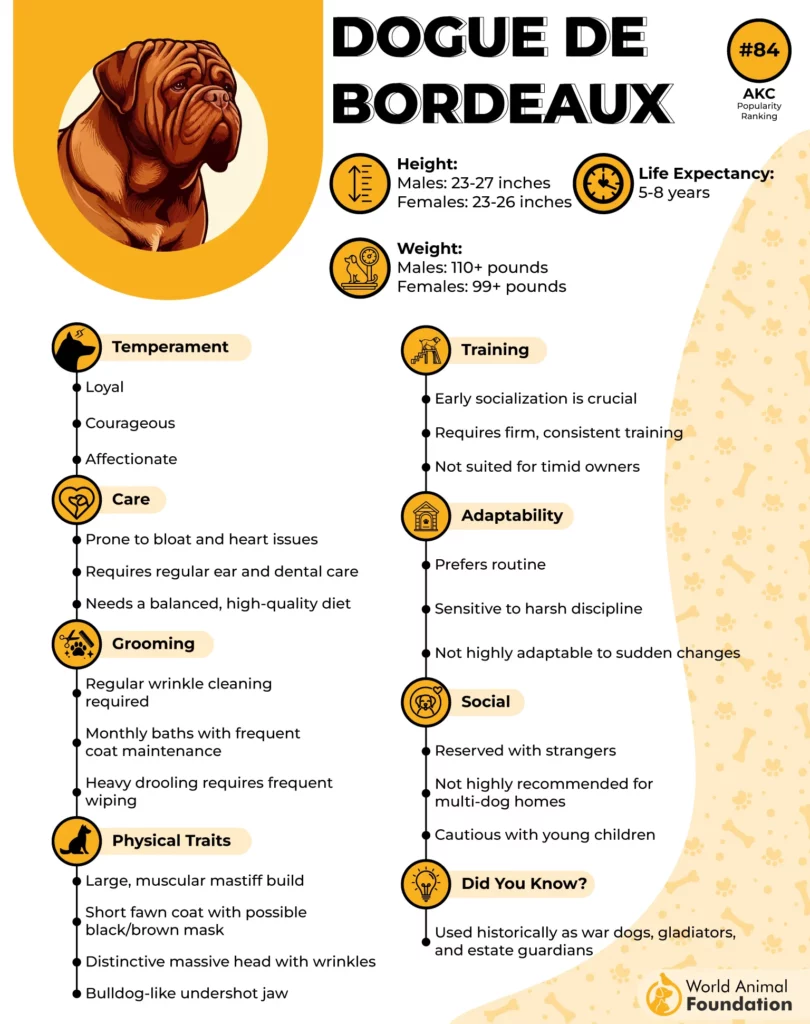
Not built for marathons
This isn’t a dog that wants long hikes or energetic games. The Dogue de Bordeaux has a slower metabolism and a body structure that isn’t built for endurance, as highlighted by Showsight Magazine. Short walks, consistent routines, and a cool environment suit them best — they’re prone to overheating and need rest more than activity.
Care takes consistency
This breed is known for drooling, snoring, and a short life expectancy compared to other dogs. They also require close attention to diet and joint care from an early age. But what they offer in return is quiet strength, emotional loyalty, and a calm presence that feels deeply human.
5. Neapolitan Mastiff
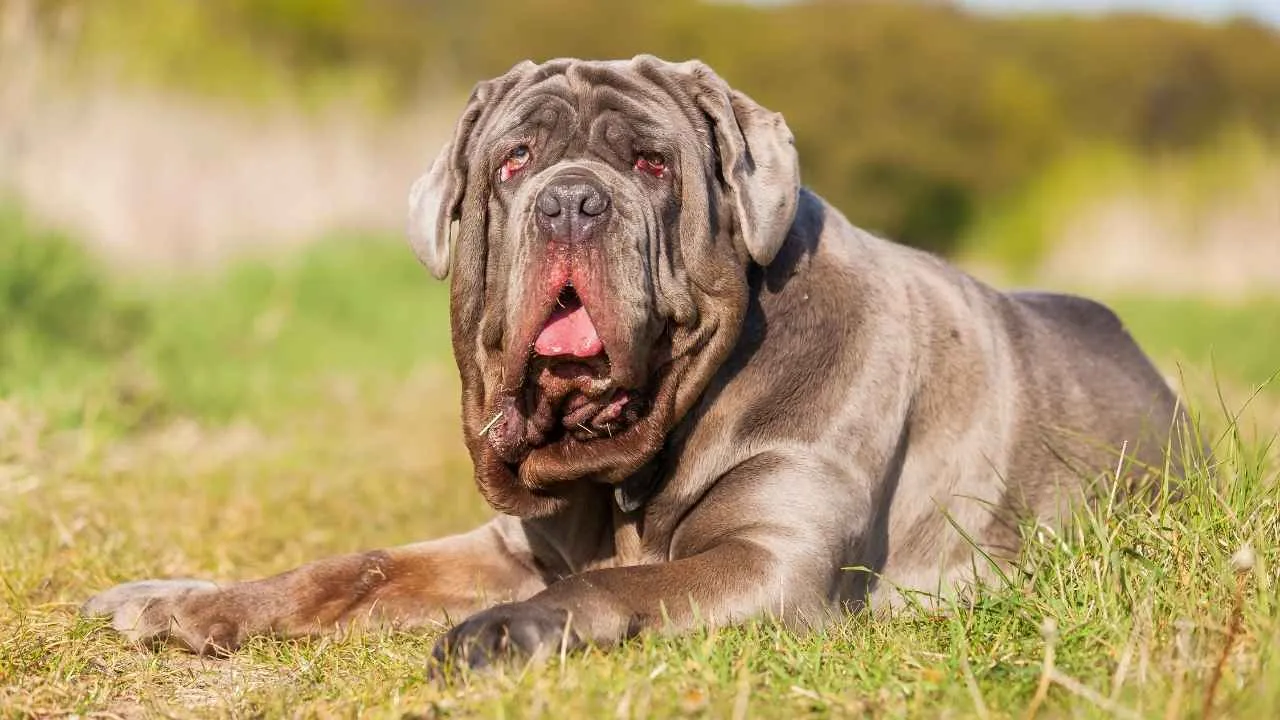
The Neapolitan Mastiff traces back to ancient Rome, where it was bred not just for intimidation, but for strategic protection. That history lives in its posture — calm, watchful, and always aware of its surroundings. It’s not a breed that needs to prove itself with barking or chasing; its presence alone is the message.
Loose skin, tight loyalty
What catches most people first is the Neapolitan’s heavily wrinkled face and sagging jowls. But under that dramatic exterior is a deeply loyal and serious-minded dog, as Orvis quoted.
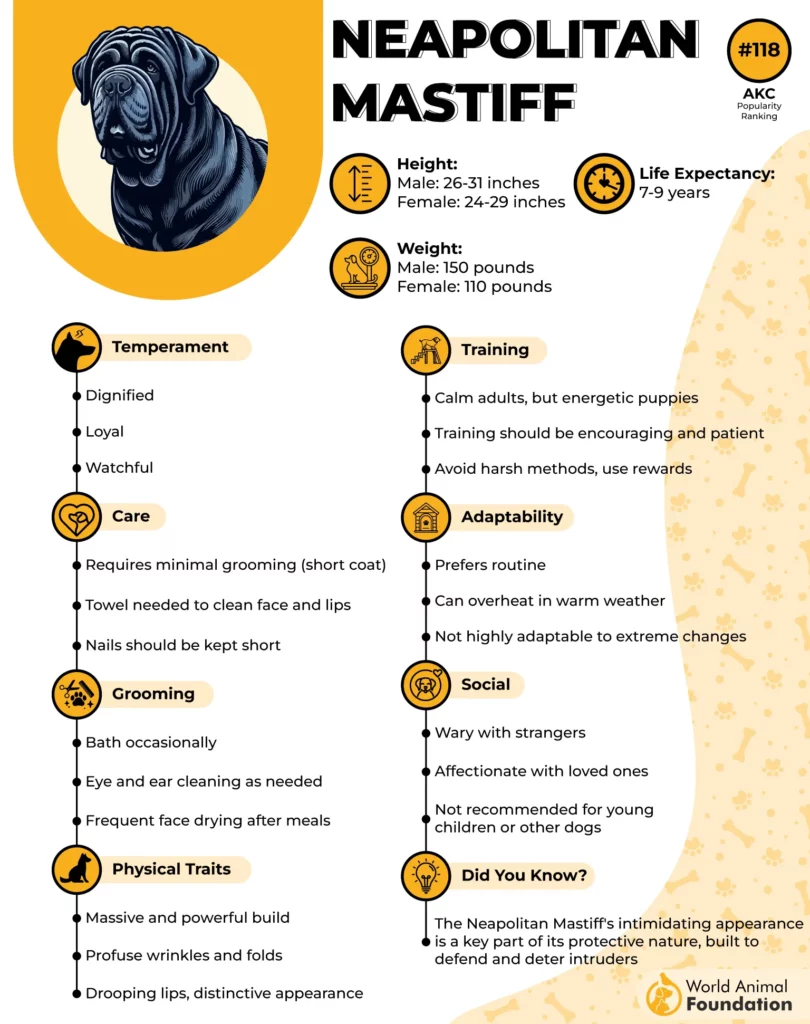
This breed is especially protective of its inner circle, often forming a stronger bond with one or two people, and showing quiet affection through closeness rather than play.
Movement with intent
Don’t expect a playful bounce or clumsy energy. Neapolitan Mastiffs move slowly and deliberately. They have heavy frames and loose joints, so sudden movement isn’t their style. That doesn’t mean they’re lazy — it means every step is calculated, especially when they’re guarding their territory.
Training requires mutual respect
You can’t “make” a Neapolitan do anything — they’re independent thinkers. What works is calm consistency and boundaries set early. They respond to tone, not volume, and will shut down with harsh handling. Socialization is crucial, not just to curb protectiveness, but to keep them emotionally balanced in new situations.
6. Presa Canario

Originating from the Canary Islands, the Presa Canario was bred to work, not just as a guard dog, but also to manage livestock with calm dominance. That lineage explains its unique balance of confidence and restraint. This isn’t a dog that overreacts. It assesses situations quietly, responding only when it senses something is truly off.
Presence without noise
Presas are not barky. Their silence is part of their strength — they prefer watching over reacting, and they rarely seek attention. But make no mistake: they are territorial, and once bonded with a household, they are alert to any change in routine or environment. Their protective drive is instinctive, not trained in.
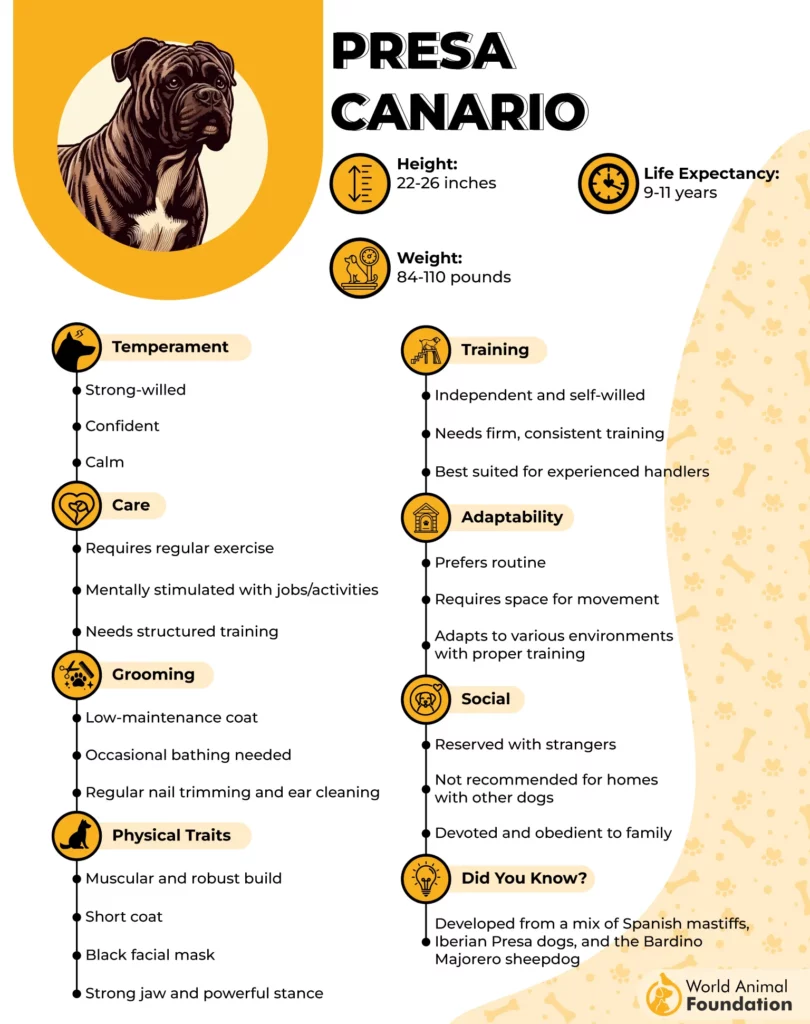
Independent but observant
This breed is not wired to be clingy or people-pleasing. It has a strong sense of autonomy and expects clarity in leadership. Owners need to set rules early — this isn’t a dog that thrives under loose boundaries. But once trust is established, the Presa becomes deeply attuned to its human’s body language and tone.
Stability over stimulation
Presas don’t crave chaos — in fact, too much novelty can make them uneasy. They need structured introductions to new people and animals, with the owner remaining calm and in control. Physical strength aside, their emotional steadiness and ability to remain composed under pressure are what make them exceptional — but only in the right hands.
7. Pyrenean Mastiff
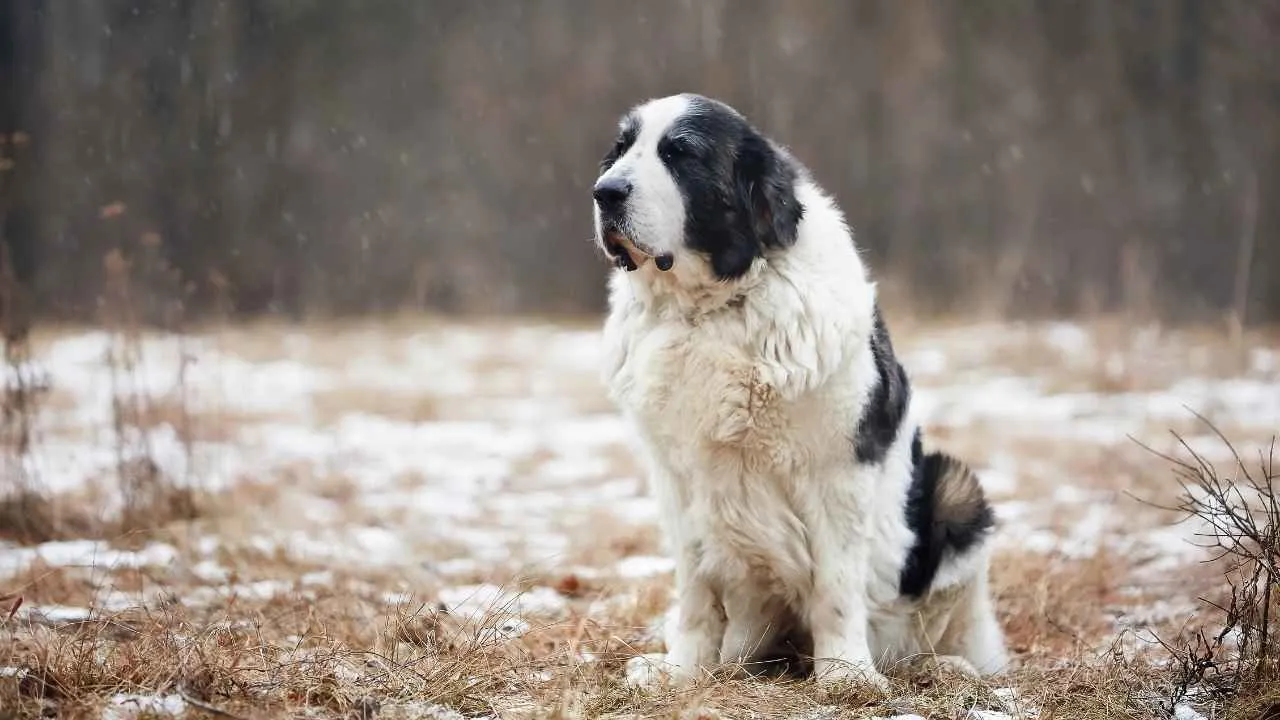
Originally developed in the Aragonese Pyrenees of Spain, the Pyrenean Mastiff was bred to protect livestock from predators like wolves and bears. What’s notable is not just their guarding instinct — it’s their stamina. These dogs were expected to cover miles alongside herds, staying alert without tiring or acting impulsively.
Massive, but measured
Despite their imposing size, Pyrenean Mastiffs are not quick to assert dominance. Their temperament is measured — they’re watchful and protective, but not reactive. Unlike other flock guardians, they have a softer disposition with familiar people and are especially gentle around children if raised with them.
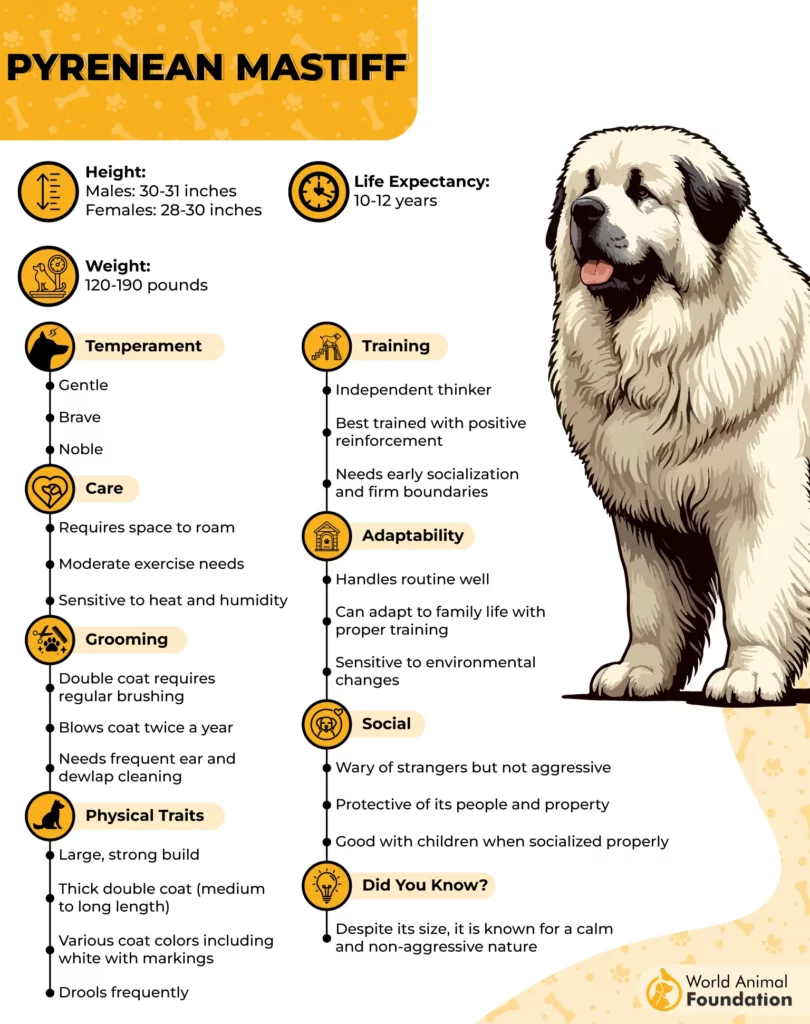
Thick coat, thin tolerance for heat
Their dense, weather-resistant double coat allowed them to endure freezing mountain climates. That same coat, however, makes them poorly suited for hot or humid environments. Owners must be proactive about overheating, especially during exercise, even in mild temperatures.
Slow maturity, deep loyalty
They’re slow to mature — both physically and mentally. Full emotional development can take up to three years. But with that patience comes lasting loyalty. Once bonded, they won’t just protect your home — they’ll quietly position themselves between you and what they sense as a threat, without waiting for a command.
Conclusion
Mastiff breeds may look like stoic warriors, but behind those powerful builds are loyal hearts that live to protect and love. From the ancient Neapolitan to the rugged Pyrenean Mastiff, these dogs are bred for presence, not noise. However, their breed’s large size demands respect, routine, and proper guidance.
Their calm nature is best shaped through gentle training, not harsh methods. While many are recognized by the American Kennel Club, they aren’t one-size-fits-all pets. Mastiffs can be prone to specific health conditions, especially due to their heavy bone structure and lineage.
These large dogs aren’t for casual ownership — but for the right person, they’re once-in-a-lifetime companions. Choose with care, train with love, and you’ll earn a protector for life.


